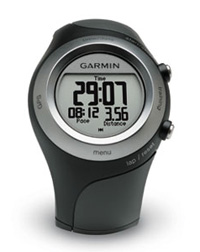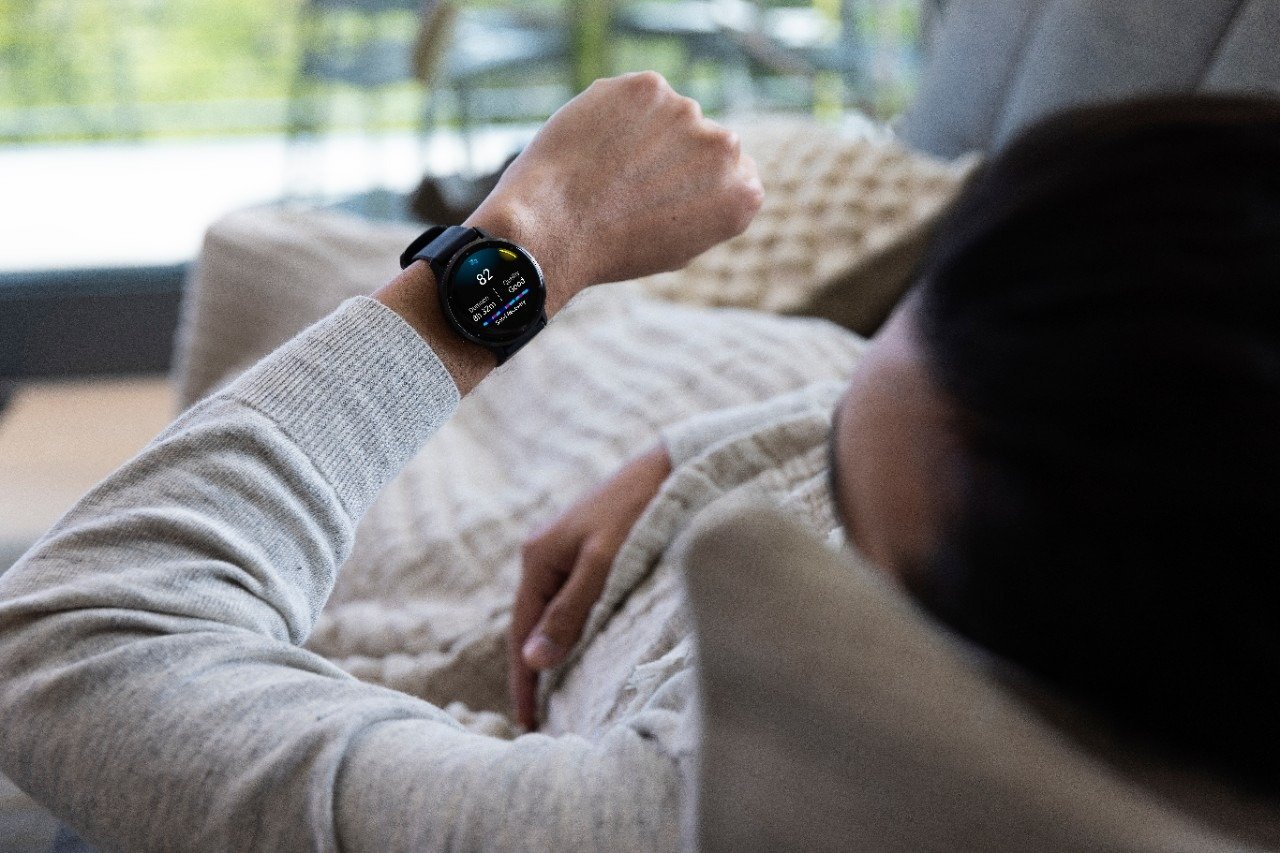
Garmin’s Virtual Coach: Article #1 – Training with Heart Rate
 In the first of our monthly articles to accompany the forthcoming Virtual Coach section on the Garmin UK website, we ask the experts at Full Potential to give you the advice you need to succeed in training.
In the first of our monthly articles to accompany the forthcoming Virtual Coach section on the Garmin UK website, we ask the experts at Full Potential to give you the advice you need to succeed in training.
How do we monitor our training?
It is often hard to gauge the effort level of a particular run or training session. How we are feeling, are we running fast enough, is it too easy or am I working too hard?
From our experience we end up either doing all our running at a steady pace or, if you are the typical athlete who thinks ‘harder is better’, then every run is too hard. This will compromise your training and ultimately your performance. By consistently training too hard the results will be a lack of consistency and illness or injury.
Why use your heart rate to monitor your fitness?
Through our individual genetic make-up, we all have our own unique physiology and cardiovascular system, including our heart. This means that by monitoring and improving our heart and cardiovascular system we will become fitter and see our performances improve.
The fitness of the heart and therefore our cardiovascular fitness is the single most significant factor in our development as a runner. If we are therefore able to track our cardiovascular fitness and design OUR training to meet OUR cardiovascular goals, then we are training in the most effective way for OUR body.
 If we measure the work rate of our heart then this is the most accurate method of determining how much benefit we are deriving from our training. There are other ways of gauging this work rate, such as how quickly we completed a certain distance, how hard we were breathing or how tired we felt, but these can all be effected by outside influences such as terrain, weather, hydration or mood.
If we measure the work rate of our heart then this is the most accurate method of determining how much benefit we are deriving from our training. There are other ways of gauging this work rate, such as how quickly we completed a certain distance, how hard we were breathing or how tired we felt, but these can all be effected by outside influences such as terrain, weather, hydration or mood.
The ultimate goal of training with a heart monitor is control and to be able to run longer and faster with a lower heart rate. If you keep track of your results, there will be a couple of ways to see the progress.
First, as you improve, you will see that running the same distances at the same heart rate will become easier. Effectively, you will be able to run faster for these distances without your heart having to work as hard. This is a direct reflection of increased efficiency of the heart. To see this, try running a set course – with your monitor – that is several miles long, and stick to a preset speed, perhaps your marathon pace. Then, under similar weather conditions, try the same course again a few weeks later. Run it at the same pace as you ran previously and compare your heart rates for the two runs.
If you are fitter since your first run, your heart rate should be lower during your second run.
Another way to see results is to keep track of your resting heart rate by taking it down and recording it every morning before you get out of bed. As your fitness increases, you will see a lower resting heart rate.
What information do we need to use our heart rate monitor effectively?
Many runners own a heart rate monitor but often never use it correctly. Often they don’t know their maximum heart rate (MHR) and have not therefore accurately calculated their own heart rate training zones. There are various formulae, which are suggested ways of working out your MHR. The most popular involves subtracting your age from either 220 for men, or 226 for women. Unfortunately this method is only reasonably accuracy for about 80% of runners! Not great odds to base your training on.
What are the most effective ways of getting this information?
Having already established that you need to have accurate heart rate information to achieve positive training results, how do we get this information? You can achieve this by either testing yourself or by getting a physiological test done under Lab conditions. If you are going to undertake either test make sure you are healthy and clear of injury and illness. If you are in any doubt seek medical advice beforehand.
Doing the test yourself:
The least expensive way is to calculate it yourself. The most effective method is to do interval training, either on a slight hill, over approximately 200 meters or around 400 – 600 meters on the flat. Sprint for the length of the effort and then take a short jog recovery. If you repeat this five times you should achieve a heart rate that is very close to your MHR.
Physiological test in a Lab
In a lab test, you will carry out a similar exercise on a treadmill with your heart rate being monitored by a professional physiologist. They may also take small blood samples to determine your blood lactate levels, which will give more information to help determine your training zones. These tests can cost between £150-200.
What factors can affect our heart rate levels?
- Fatigue Levels – You need to be relatively fresh to be able to perform at your true level and if you have trained hard on the previous couple of days then you are unlikely to be able to achieve your genuine heart rate.
- Running environment – you are likely to get a slightly higher heart rate reading if you are running in warm conditions or if you are running on a treadmill rather than outside.
Warm-up – the duration and intensity of your warm-up will affect your heart rates in your test. A longer warm-up of moderate intensity will give higher readings than a quick, light jog, because your body temperature and muscle blood flow will be greater. - Hydration Levels – being even slightly dehydrated can cause your heart rate levels to be increased.
- Heart Rate can also be affected by adrenalin, stress and caffeine.
What are the benefits to training using heart rate?
Training too hard?
Training using accurate heart rate information allows you train at the correct levels for your body. Many runners train too hard too often. Using your heart rate to monitor your training levels stops you stressing your body to much or too often. It allows you to have the energy required to perform your harder workouts successfully and not have to take unexpected days off from feeling fatigued. Training at the right level for your body allows you time to deal with the training load and recover, therefore avoiding illness or injury.
Not training hard enough?
Most runners are highly motivated so this is a less common problem than over – training but some runners simply do not train hard enough. By understanding your heart rate zones for each session, your monitor can tell you when its time to get into the zone. Simply set a minimum and maximum heart-rate zone for each run and the monitor will sound an alarm when you have dropped below your target, which tells you to pick up the pace.
Pacing and Heart Rate in Training
Using heart rather than pace in training is often a difficult concept for runners to grasp. It requires belief and patience. We always want to hit our pace! However sometimes your pace is not the best measure of how hard you are working. There are so many factors that can affect what pace we achieve, the terrain, fatigue levels, the weather, how stressed we are ….in fact any number of factors can lead us to thinking we have had a bad run when in fact this may not be the case. In my experience, if you work in the correct heart rate zones then the improvement in your pace will follow. As I said this requires belief and patience.
Using Heart Rate in a Race
Some runners like to use a heart rate monitor in a race. I think this can be useful for a number of runners. For beginners, who have little or no experience of pace judgment, it helps to gauge their effort level. A monitor can help runners who normally set off too fast or working too hard early stages of a race. Using a heart monitor can help you run a more even effort for a race, regardless of external factors such as the weather conditions, the paces of other runners, the excitement of the crowd, finding yourself isolated or the terrain of the route. It is also useful to record your heart rate information in a race, not only to see how you performed but because this information can be used for future training.
Monitoring your Resting Heart Rate (RHR)
Regularly monitoring the rate at which your heart beats when you are totally at rest (i.e. when you wake up in the morning) is a good way of checking all is well. If you find there is an increase in your normal resting heart rate, it may indicate that you are not fully recovered from a hard training session, have simply not had enough rest or it could possibly be the signs of an on-coming illness. Generally a little extra rest will see your resting heart rate return to normal.
However you should be aware that other factors including stress, dehydration and the presence of caffeine in your system could elevate your heart rate.
Article courtesy of Keith Anderson @ fullpotential – www.fullpotential.co.uk.




